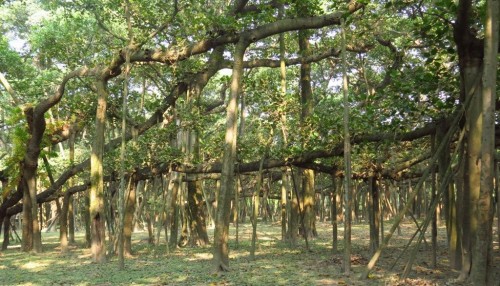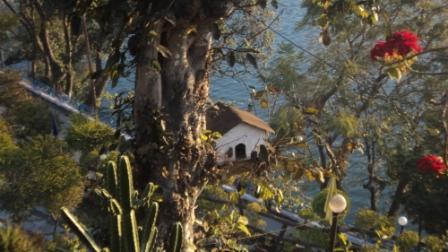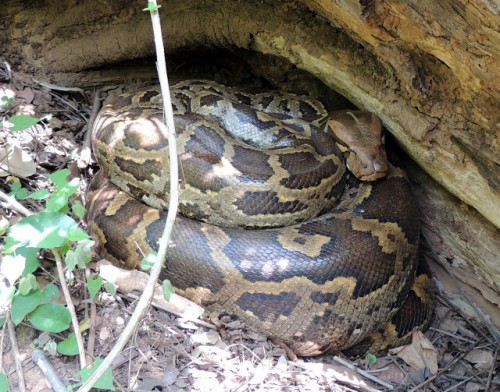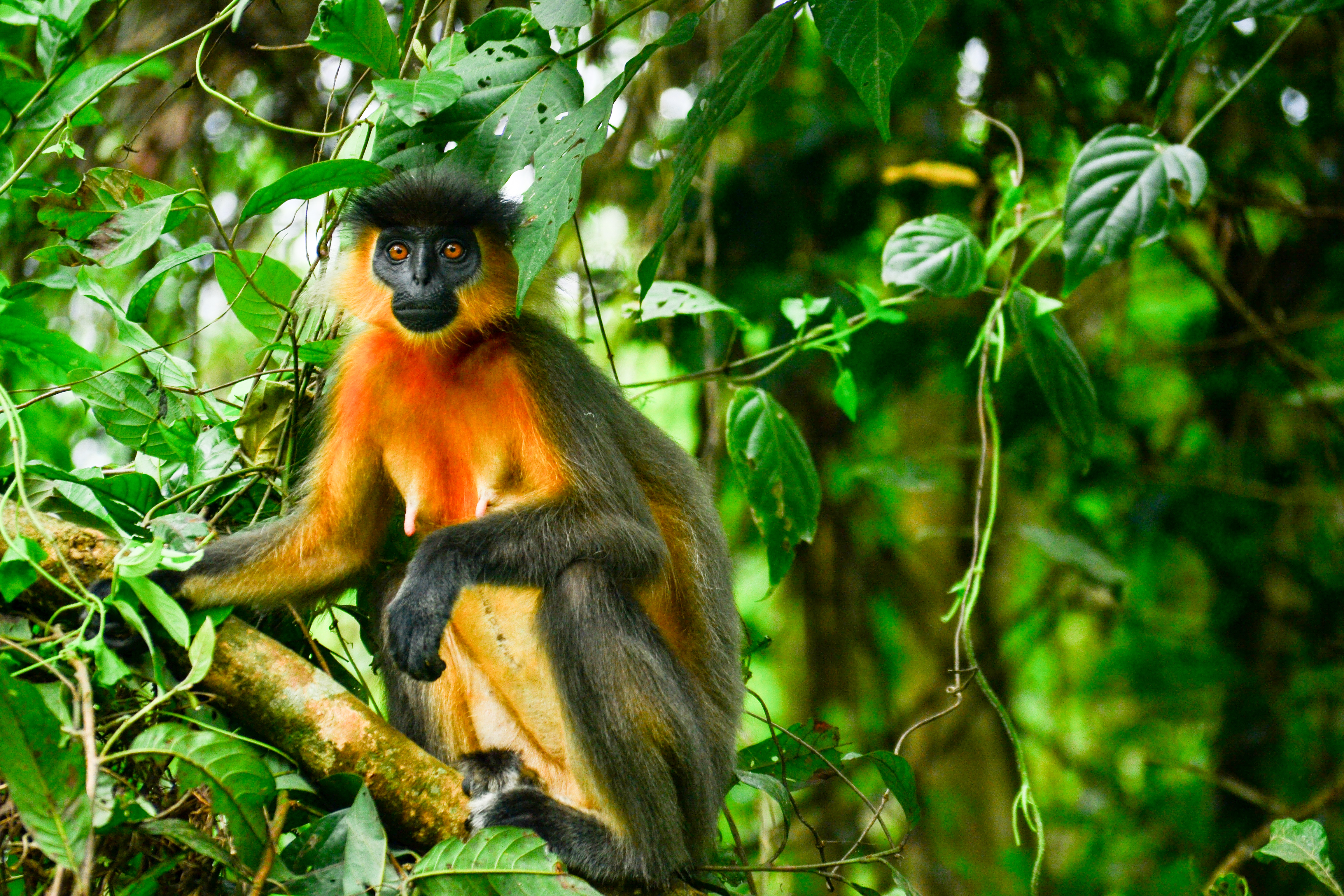Look up any tourism website on Kolkata and at the top of the list you will find Indian Botanic Garden (formerly Calcutta Botanical Garden). For a group of wildlife enthusiasts like my friends and me, a garden sounded very humdrum at the first instance, but this was no ordinary garden with manicured lawns and flower beds. It was home to about 12,000 living perennial plants and millions of dried out plants gathered from world over. The main attraction of the botanical garden ofcourse, was the giant size banyan tree that is said to have the second largest canopy in the world.
The Attraction
Acharya Jagdish Chandra Bose Indian Botanic Garden, previously known as the Indian Botanic Garden houses an old Banyan tree (Ficus Bengalensis) that is more than 250 years old. What’s more…the tree has over 2880 prop roots and covers an area of about 1.50 hectares. According to the archives, the Great Banyan Tree was born by a bird’s dropping and it grew on a Phoenix Tree (date palm). The strong roots of the Banyan Tree strangulated the date palm tree and the date palm tree was gradually killed.
A wonder of the plant kingdom, the circumference of the canopy is about 450 metres which makes it look like a miniature forest and occupies a position in the Guinness Book of World Records.
The Botanic Garden is spread over an area of 273 acres and is now operated by the Botanical Survey of India (BSI). It is one of the oldest and largest green reserves of its kind in South East Asia. It was founded in the year 1787 during the time of the East India Company by suggestion of Colonel Robert Kyd who was an amateur Botanist and Secretary to the Board in the Military department of Fort William.
Robert Kyd was the first honorary Superintendent of the Botanic Garden. Other than him, major contributors to the development of the garden included William Roxburgh, Dr George King and Thomas Anderson.
The Garden is situated a mere 8 kilometres away from the city centre of Kolkata on the West bank of River Hooghly in Shibpur, Howrah. We took a cab from the city to the Garden and were delighted to find that to reach the Garden, we had to go over the historic Howrah Bridge. Alas! Stopping on the bridge was not allowed though but we managed to click a picture from the cab itself.
Meeting the Legend
The entry ticket for the Garden is Rs 5 per person and the camera charges are Rs 10 per camera. It is a non-smoking, plastic free area.
Once inside, we hurried to get a glimpse of the Great Banyan tree which was only a few metres away from the entrance. The majestic tree was so huge and the prop roots were so widespread, that try as we might, but we could not locate the main truck of the tree.
Actually the main tree trunk became diseased after it was struck by lightning. In 1925 the middle of the tree was excised to keep the remainder healthy; this has left it as a clonal colony, rather than a single tree. A 330 m long road was built around its circumference, but the tree continues to spread beyond it.
It was an experience of a lifetime to walk underneath this living legend.
Here is a video walk through for our readers,
The branches overhead were lush and green and bustling with chattering birds.After marvelling at the tree to our heart’s content, we explored other areas of the Garden like Kyd Monument, Kurz Monument, Roxburgh Monument, Cactus House, Medicinal Plant Garden and Central National Herbarium.
Botanic Wonder
The latest census conducted at the Indian Botanic Garden in 2007 revealed 14000 species of trees and 13,722 plants of which 500 specimens are considered rare, according to Dr. H.S. Debnath, director of Indian Botanic Garden.
The entire Garden is split into sections where trees from various regions within India and also from the other countries had been planted. I was from these gardens that the tea now grown in Assam and Darjeeling was first developed. Trees of the rarest kinds, from Nepal, Brazil, Penang, Java and Sumatra can be found here. There are towering Mahogany trees, an avenue of Cuban Palms and an Orchid House. Mango and Tamarind trees shade the grassy lawns.
Some of the prized possessions of this garden include 26 species of Bamboos, 140 cultivars of Bougainvillea, 109 species of Palms, several Screw pines and a splendid collection of Cacti.
Some remarkable botanic species found in the Garden
- Phoenix rupicola – This is a rare endemic Palm, with only two populations surviving today, one is in the Eastern Himalayas and the other in this garden having a population of five plants.
- Double Coconut Palm Tree – The double coconut palm tree produces the largest seed in the world and has a life span of 1200 years. This tree has been in the garden since 1894 and is a female tree.

- Century Palm – This is another rare Palm tree that produces seeds only once in a lifetime and dies.
- P. Unguifer – This is a rare and endemic threatened screw pine found in Mungpoo Hills, Darjeeling. This tree is also present in the garden.
- Euryale ferox Salisb – This is an aquatic plant found in the garden lakes. The roasted edible seeds of this plant are sold in the market as “Taal Makhana”.
- Cannon Ball Tree or Couroupita guiansesisaubl – The fruits of this tree look like Cannon Ball, hence this name. In western countries, the pulp of the fruit is used to feed pigs and poultry.
- Bread Fruit Tree or Artocarpus communis – When the fruit of this tree is baked or roasted in the fire, it has a starchy texture and fragrance of freshly baked bread hence the name bread fruit tree.
- Mad Tree or Pterygota alata var. Irregularis – Each leaf produced by this tree is different in shape and size from the other.
- Sausage Tree or Kigelia Pinanata Dc – This tree bears a large sausage or pumpkin shaped fruits hanging from long thread like peduncles making the tree look very unique.
- Rashogolla Tree or Chyrsophyllum cainito – The fruit of this tree is big and white in color and has a round shape and sweet taste just like the favourite and famous Bengali Sweet Rasgulla.
Animals around
The Botanic Garden is also home to many animals and birds. We saw several birds like the Jungle Babblers, the Golden Oriole, the Black Rumped Flameback, Rufous Treepie, Common Drongo and the Green Bee-Eaters within the boundaries of the garden. Squirrels and Mongoose could also be seen scurrying here and there. Other creatures that we spotted were a Signature Spider, a snail, butterflies and a grasshopper.
After spending sometime at the banks of the serene River Hooghly in the evening, we returned back to the main gate, happy and content that we had spent some time appreciating a most wonderful and historical place.
More Related Stories,
Urban Kolkata Home to Numerous Plants and Animals
Sunderban Successfully Breeds Rare Turtle Species
Best Places to Find Tigers in India
Image via CC/Flickr by Bendus, Shilpi Gemawat








One thought on “A Floral Paradise: Kolkata’s Indian Botanic Garden”